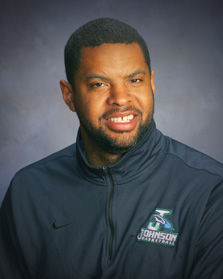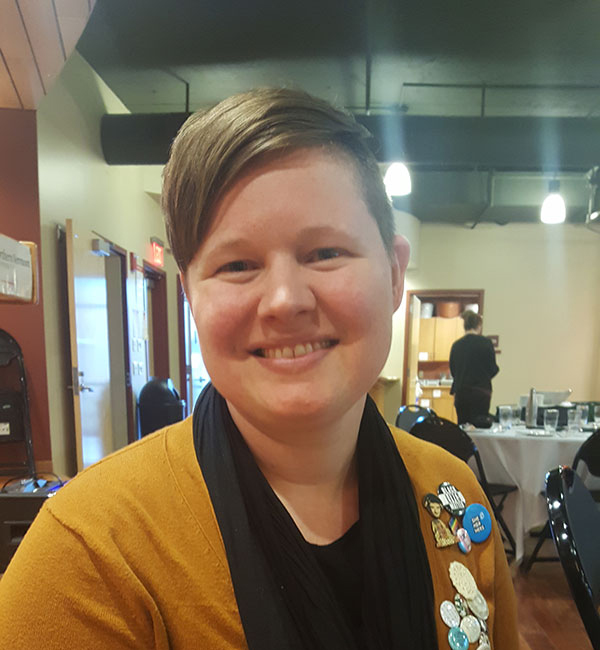VSCS Social Justice Partners present “equity and inclusion” plan to trustees at Oct. 16 meeting
Hannah Miller
Across the Vermont State Colleges System, people have been working on social and racial justice issues in campus-based groups, but several months ago, the disparate efforts banded together, and last month, they presented a racial justice action plan to the board of trustees.
The combined VSCS wide group calls itself the Vermont State Colleges Social Justice Partners. Miles Smith, assistant athletic director and head men’s basketball coach at NVU-Johnson, presented the VSCS Board of Trustees with the partners’ proposed three-step “equity and inclusion plan” at the trustees’ Oct. 16 meeting.
The first step the partners envision is to engage with the board to evaluate barriers “and develop strategies focused on recruiting and retaining a diverse workforce and student body.” And to conduct data analysis to evaluate “access, retention, excellence, and institutional receptivity,” before moving to the next step.
The proposed second step is for the board to support hiring a “coordinator of diversity, equity and inclusion” for the whole system. This person would work to coordinate social justice work across the colleges. The third step would be to hire a diversity, equity and inclusion officer for each campus.
Professor of Psychology and Human Services, Patricia Shine of Northern Vermont University-Lyndon, introduced a group of speakers from across the college system to trustees. The speakers relayed to the board the social and racial justice work they have been doing on each campus.
Shine said that the combined group had been meeting for the past few months “to learn what is being done at our sister institutions, to share resources and ideas, and to begin to build community with each other in order to strengthen our individual efforts into collective action.”
“The foundation of every educational institution has to be social justice,” Shine said. “And that foundation requires all of us to consistently work together to create nurturing communities that are genuinely inclusive and equitable.”
Smith and Shine framed the issue as not just one of individual equity and justice but also one of consequence to the future of the VSCS itself. The country, Shine said, is projected to be 50 percent people of color by 2045. “One of the questions we are facing as institutions of higher educations,” Shine said, “is are we preparing all of our students – white students and students of color – to function effectively and successfully in that world?”
Shine tied the issue of racial justice to that of enrollment, one of the issues addressed in the VSCS’s recently updated strategic priorities. “In terms of recruitment, do our colleges draw in students of color? And when we do – and we do, but not in the numbers we could – how well do we retain those students of color? How genuinely safe and welcome do they feel on our campuses?”
Shine then said that she knew of three Black faculty members “among the extremely few” she said the college ever hired, who left the college and the state of Vermont “predominantly due to racism.”
Hannah Miller, a professor of education at NVU-Johnson, said in an interview on Oct. 27 that the first step she would like to see the VSCS Board of Trustees take is to adopt the action plan.
However, Miller said, the three steps in the action plan are just a start. “We also want to acknowledge that we don’t think these are all the steps. It’s not enough to just hire diversity and equity officers and directors,” Miller said. “But this is what we’re recommending as our next steps right now in our probably infinite journey toward racial justice in our community.”
Miller said that while she did not hear any immediate follow-up from the board, the responses during the meeting suggested that the presentation was well received. “I’m cautiously optimistic that they agree that this is a priority, but now we just need to wait and see what action follows up,” Miller said.
In a Nov. 4 interview, Rep. Jim Masland, a legislative representative on the VSCS Board of Trustees, echoed the presenters’ sentiment that many other issues cannot be resolved if racial justice issues are ignored. “No one presentation encapsulates it all. There is too much to it,” Masland said. “We should not be surprised by that, and just continue to participate when we can, act on what we learn, and be cognizant of our own actions, thoughts and deeds.”
Masland said that it is “too soon to tell” if the board would take up the action plan, but he said, “I would think probably.”
In an Oct. 26 interview, Smith said that increasing equity and diversity in staff, and particularly faculty, on campus could draw more people of color to the system; people who might otherwise opt to go somewhere else.
“What if the students that are a part of the BIPOC community always wanted to go to their state college in their area, because they felt so confident that they would thrive there rather than going out of state or going to another institution because of the color of their skin? What if you had a whole entire population being able to do that, to come to your state institution,” Smith said. “That’s a game changer for me.”
Smith made clear that a lack of diverse professors is an issue affecting students. He said that students get a distorted view of what BIPOC success looks like if they go to a college and never see a professor that looks like them.
He brought up the basketball team he coaches and how the work he does with the team stretches much farther than just the game. Smith said his team has been having discussions about social justice movements, events that affected black people that are traditionally left out of the history books, and writers like Booker T. Washington and Toni Morrison.
Smith said the students he’s working with might never encounter these writers and theorists from the African American community if the students weren’t on the team.
“And that’s the interesting thing right there,” Smith said. “Now, you are looking to find diversity from academia in a basketball program when the diversity should be coming from the faculty population.”
Smith said his ideal vision of what the VSCS could be is a place where people of color, both in and out of state, want to go to school. Because, in the ideal world, it would have earned a reputation for diversity and inclusion across all levels.
The college system is in a financially perilous place right now, and Smith thinks that moving toward diversity equity and inclusion would improve recruitment, retention and stability in the system and could potentially be part of a path toward institutional sustainability.
Miller said that right now, on the NVU campus, there are efforts underway to change the hiring process to make it more diverse and equitable. A pilot phase of the updated hiring process is moving forward now, Miller said.
However, she said, “It is not enough to just have diverse hiring practices. If the culture where the people are coming in is not an equitable place and is not an inclusive place, then we can hire all of the diverse candidates we want, but they’ll get here and realize that it’s not an inclusive, welcoming place. So, we have to simultaneously work on reforming the culture and context of our community as we also work on reforming our hiring practices.”
NVU President Elaine Collins noted there is a discussion about racial justice work underway at the board’s and council of presidents’ levels. “We are still thinking about how we can support the work in a deeper way,” Collins said.
Specifically, regarding NVU, Miller said that while continuing with the diversity and inclusion task force’s work is important, it is also important for the faculty and staff to make racial equity the “umbrella” for all of the work they do. “Everything we do has to be designed through a lens of racial justice,” Miller said.





